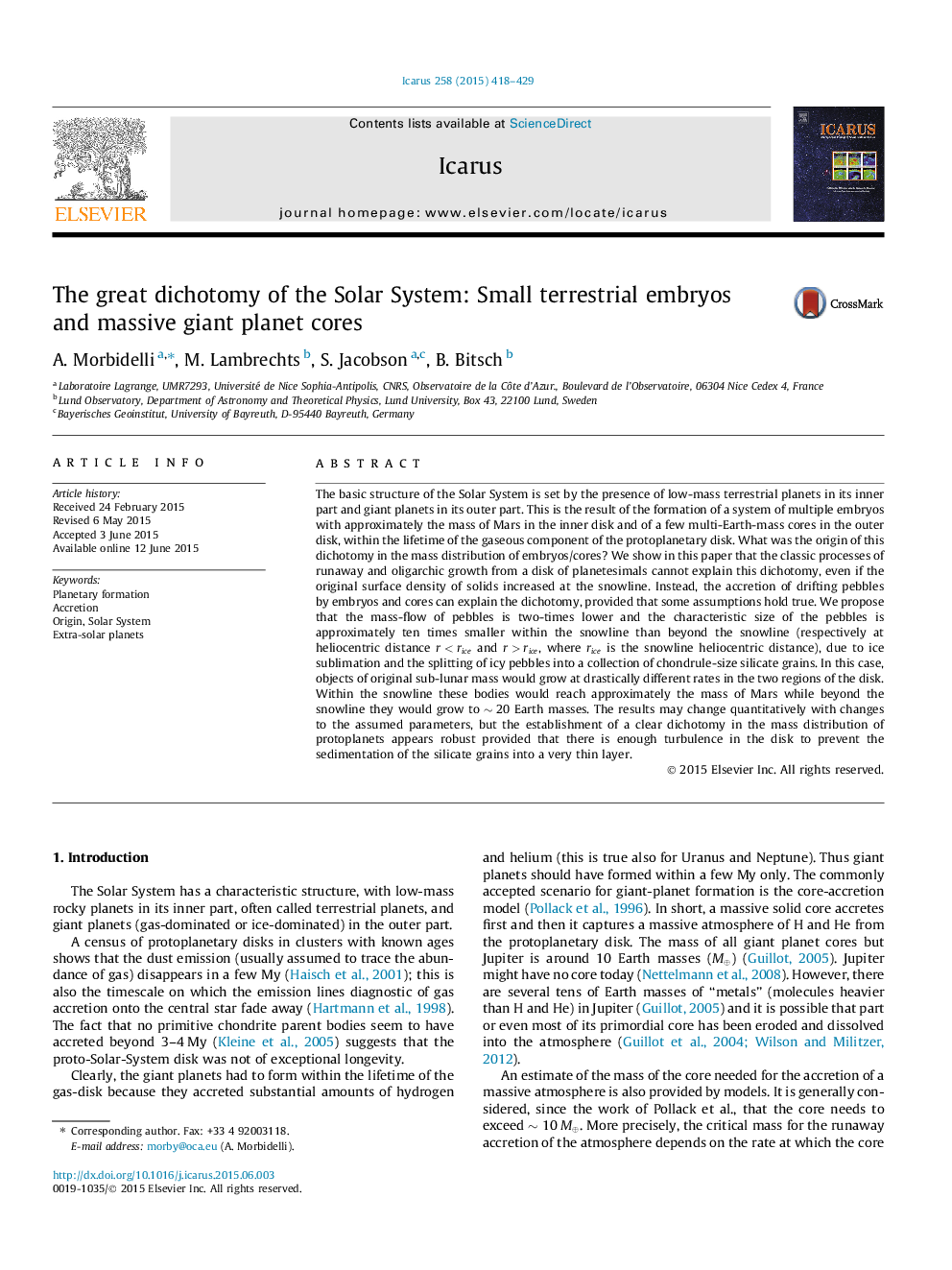| کد مقاله | کد نشریه | سال انتشار | مقاله انگلیسی | نسخه تمام متن |
|---|---|---|---|---|
| 1773021 | 1523532 | 2015 | 12 صفحه PDF | دانلود رایگان |
• We explain why Mars-mass embryos formed in the inner Solar System and massive cores in the outer System.
• Accretion of planetesimals cannot explain this mass difference.
• The scenario of formation of embryos and cores can explain this mass difference.
The basic structure of the Solar System is set by the presence of low-mass terrestrial planets in its inner part and giant planets in its outer part. This is the result of the formation of a system of multiple embryos with approximately the mass of Mars in the inner disk and of a few multi-Earth-mass cores in the outer disk, within the lifetime of the gaseous component of the protoplanetary disk. What was the origin of this dichotomy in the mass distribution of embryos/cores? We show in this paper that the classic processes of runaway and oligarchic growth from a disk of planetesimals cannot explain this dichotomy, even if the original surface density of solids increased at the snowline. Instead, the accretion of drifting pebbles by embryos and cores can explain the dichotomy, provided that some assumptions hold true. We propose that the mass-flow of pebbles is two-times lower and the characteristic size of the pebbles is approximately ten times smaller within the snowline than beyond the snowline (respectively at heliocentric distance r
Journal: Icarus - Volume 258, 15 September 2015, Pages 418–429
